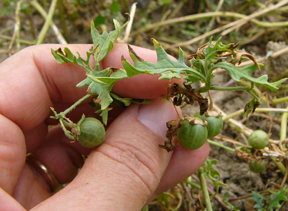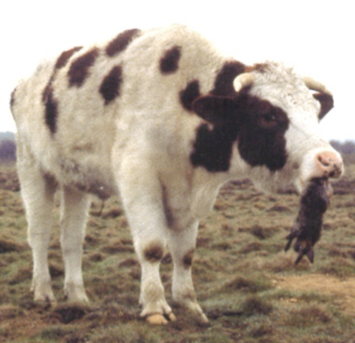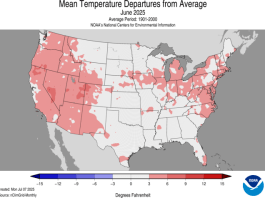

William “Willie” Gibson, a board member of the Vermont Grass Farmers Association, and a dairy and livestock farm advisor for the Northeast Organic Farming Association wrote me a question in response to an article about teaching cows to weeds:
“This surely is fascinating, Kathy. One question that popped into my head when reading your theory “the more new things they eat, the more new things they eat” is:
Could training these animals to eat many kinds of plants that we generally consider undesirable (‘weeds’) go ‘too far’ and break (some of) them away from their natural instincts (and I believe, herd- and peer-training) to avoid certain plants that can have acute, serious negative effects (i.e., ‘poisoning’)?”
Willie continued, “This is coming from one who has been directly involved with dairy and livestock farming in the Northeast for all of my nearly 50 years (especially Vermont, where I was born and raised and still live, farm, and work as farm advisor). I am an avid student, practitioner, and teacher/advisor of rational intensive grazing/MIG. I also have not studied your work in depth, but was most intrigued (and entertained) by your presentation at the VT Grass Farmer’s Association Grazing Conference in January 2010.”
Since I get this question a lot, I thought it might be helpful to share my answer.
What I’m finding is that animals know a lot more about choosing what to eat and mixing their diets than we as the “superior brains” ever could have figured out for them. There have always been plants in my pastures that make me feel a little nervous, knowing that my trainees could decide to try them and that they are not going to be so good for them. In some cases they have avoided them completely. In others they have actually eaten things I thought they shouldn’t eat, or couldn’t eat without causing themselves problems. In all cases, no animal was ever harmed by what he/she chose to eat.
There are a variety of aspects to what’s happening. First, there is no natural instinct that tells an animal what to eat and what not to eat. It’s all learning, most importantly from Mom, and then from their peers as well. The research demonstrates clearly that animals eat what mom ate and avoid what she avoided UNTIL they have an unmet need or they learn something new.
 Animals experiment when they have an unmet need, when they see a herd mate eating something new, or when their minds have been opened to the idea that food could be a wide variety of things. Then they decide what to eat based on the feedback they get from nutrients and toxins in the food. Nutrients tend to increase palatability and the amount the animal will eat. Toxins tend to decrease palatability and reduce what the animal eats. (Read “Palatability Redefined for more on this.)
Animals experiment when they have an unmet need, when they see a herd mate eating something new, or when their minds have been opened to the idea that food could be a wide variety of things. Then they decide what to eat based on the feedback they get from nutrients and toxins in the food. Nutrients tend to increase palatability and the amount the animal will eat. Toxins tend to decrease palatability and reduce what the animal eats. (Read “Palatability Redefined for more on this.)
More research has shown that when animals have limited choices, rather than starve, they will choose to eat things that can cause them harm. There’s also on-going research that shows that different nutrients and toxins offset the effects of other toxins, and that animals can actually mix their diets to increase their intake of foods with certain toxins. The problem is that we don’t yet know much about these relationships and it’s going to take a long time for us to figure them out.
So, knowing all this, what I do is make sure that my animals have lots of variety. That prevents them from eating too much of any one thing, and gives them lots of alternatives for mixing a diet that’s just right for each individual. I rely on their internal feedback, knowing that creatures have been using it for millions of years to successfully survive.
In the process I’ve seen some interesting things:
- There is something in our western pastures called scorpion weed. I don’t want my cows to eat it because it’s not so good for them from a toxin stand point. I left them in the pasture until they had eaten half of everything that was there, but they didn’t seem to have touched the scorpion weed at all.
- In 2009 I followed them around as they mixed nightshade and plains milkweed into their diets. Though both can have some serious toxin issues, nothing bad happened to my cattle, likely because they mixed so many other things in that they ate very little of any one thing. (For the complete report of the project click here.)
- Most alarmingly, I have watched a herd of 120 trained cows in a MIG system move into a new pasture, head straight for a patch of poison hemlock and graze it to the ground. I’ve also seen pictures online from producers using MIG systems showing similar results. I can’t tell you what’s up with that, and I would never recommend training cows to eat such a weed, but there is obviously something happening that allows them to sometimes do that without problem.
The more I watch cows graze, the more I learn about how capable they are of taking care of themselves in pasture if we just give them plenty of choices. I guess I subscribe to the “two heads are better than one” theory, and in this case, I’m relying on the internal “intelligence” of my four-legged colleagues.
 For more on how you can help your cattle learn to eat this and other weeds, check out the article “How to Teach Livestock to Eat Weeds” or visit Kathy’s website (www.livestockforlandscapes.com) where you can get a Book, DVDs, or a purchase a Coaching Program.
For more on how you can help your cattle learn to eat this and other weeds, check out the article “How to Teach Livestock to Eat Weeds” or visit Kathy’s website (www.livestockforlandscapes.com) where you can get a Book, DVDs, or a purchase a Coaching Program.




Kathy raises interesting ? as to how cows survive a binge on toxic weed like Hemlock. From reading*, I learned that various stressors -toxins, hyperthermia etc can change the structural conformation of proteins essential to normal cell function.with bad consequences for the animal, BUT the same stressors also activate genes for proteins, ex. Heat Shock Proteins(HSP).which stabilize the threatened cytoplasmic proteins.. Moreover activation of the HSP genes and others activated in cell stress, leaves the animal better equipped to deal with further toxic encounters, a step in adaptation to environmental threats which lie ahead.
Of course I can’t say that this is THE answer to Kathy’s query about the encounter with poison Hemlock, but such physiologic defenses are extensively documented by numerous scientists for bovines and the whole animal kingdom, so I’ll bet on it.. My source is ” Environmental Physiogy of Livestock”, eds. Collier & Collier, Wiley Blackwell,2012. especially chap.8 by Elsasser et al. The book is
expensive, but I have access to local vet school library.
Comments are closed.